Chapter-2
Physicochemical analysis of different varieties of Amla and comparative analysis of functional and nutritive values of Amla fruit, seed and seed coat powder.
Physicochemical analysis of different varieties of Amla and comparative analysis of functional and
nutritive values of Amla fruit, seed and seed coat powder
2.1. Introduction
Amla (Emblica officinalis L.) as a Euphorbiaceous plant is widely distributed in subtropical and tropical areas of China, India, Indonesia and Malaysia.
The fruit is used as a major constituent in several Ayurvedic preparations for promotion of health and longevity. It is known that Amla is a good source of polyphenols, flavones, tannins and other bioactive compounds. These substances being strong antioxidants might contribute to the health effects of Amla. Several active compounds like gallic acid, ellagic acid, 1-O-galloyl-D glucose, chebulininc acid, quercetin, chebulagic acid, kaempferol, mucic acid 1,4-lactone 3-O-gallate, isocorilagin, chebulanin, mallotusinin
and acylated apigenin glucoside compounds have been isolated from the aqueous extract of Amla. These bioactive components have anticancer, hypolipidemic, expectorant, purgative, spasmolytic, antibacterial, hypoglycaemic hepatoprotective,
hypolipidemic activities and also can attenuate dyslipdaemia. Though the functional properties of Amla have been reported, the seed and seed coat of Amla have never been investigated for their functional properties as well as compositional analysis. In this
chapter the physicochemical properties of different varieties of Amla are presented.
Further, Amla seed and seed coat of Chakaiya variety (major processing waste of Amla based industries) were separately analyzed for their proximate composition, antioxidant
properties, total phenolic contents, major/micronutrients and fatty acid profile.
2.2. Materials and methods
2.2.1. Raw material
Amla of Chakaiya, Francis, Kanchan, Nnarendra-7 and Krishna variety were procured from local market of Allahabad, India. The Amla fruits were cleaned thoroughly under tap water to remove adhering dust and wiped with muslin cloth. Fresh fruits of different varieties were evaluated for their physical, chemical and functional
properties. The fleshy part of Chakaiya variety of Amla was grated and seed was separated manually from adhering Amla. Grated Amla shreds were dried in tray drier at 40℃. The dried Amla shreds were ground in laboratory grinder and passed through 0.5
mm screen sieve. Whole Amla seeds were dried in tray drier at 40℃. As the whole seeds dried they broke along the ridges with a crackling sound. The seed coat was separated from the brown seed from each of the broken units. Seed coat and seed were separated manually and both were converted into powder separately as done for Amla shreds. The powder of fruit, seed and seed coat were stored at refrigerated temperature (4℃) for further analysis. Fig 2.1 shows the image of whole seed, seed coat and seed of Chakaiya variety.
 Fig. 2.1 Images of (a) Amla fruit of Chakaiya variety; whole seed; grated Amla;seed coat; and seed.
Fig. 2.1 Images of (a) Amla fruit of Chakaiya variety; whole seed; grated Amla;seed coat; and seed.
2.2.2. Methods
2.2.2.1. Analysis of physical properties of Amla.
Different varieties of Amla were measured for their height and width with varnier callipers with least square of 0.02 cm. Number of fragments and shape were analyzed visually. Ten readings were taken for each physical property.
2.2.2.2. Proximate analysis of Amla.
The moisture, crude fat, protein, crude fiber content of the samples were determined by the method of Ranganna, 198612. Available carbohydrate was calculated by balance method.
2.2.2.3. Vitamin C estimation.
Sample solution equivalent to 0.2 mg ascorbic acid mL was prepared in water containing 3% w/v metaphosphoric acid added to increase the stability of ascorbic acid.
It was titrated against standard 2, 6 dichlorophenol indophenol (2,6 DCIP) solution of concentration 0.5 mg mL until the pink color developed completely. The operation was repeated with a blank solution omitting the sample being examined. From the
difference the ascorbic acid in each mg of sample was calculated from the ascorbic acid equivalent to DCIP.
2.2.2.4. Determination of hydration properties.
The water retention property (WRC) and swelling capacity (SWC) of Amla seed and seed coat were analyzed by the methods given by Robertson et al. (2000) with slight modification. For WRC, 1 g of sample was hydrated at room temperature in 30 mL of distilled water and centrifuged at 5000 rpm for 15 min and after 18 h of
equilibration the supernatant was removed. The residue was dried at 105℃. The weight of residue was recorded both prior to drying (fresh weight) at 105℃ and after drying until constant weight was obtained. WRC was calculated as the amount of water
retained by the sample (g/g of dry weight).
WRC = Fresh weight of residue(g) - Dry weight of residue (g) ÷
Dry weight of residue (g).
For SWC determination, 0.1 g of sample was hydrated with 10 mL of distilled water in a calibrated cylinder (15 cm diameter) at 30℃ temperature. After equilibration for 18 h, the bed volume was recorded and expressed as volume/g of original sample dry weight.
SWC = Volume occupied by sample (mL) ÷
Original sample dry weight (g)
page 48
http://shodhganga.inflibnet.ac.in/bitstream/10603/39981/10/10_chapter%202.pdf
Amla aka goose berry juice is synonymous with "the magic potion" & "the juice of immortality", since time immemorial.
 Its immense benefits simply cannot be ignored. Amla juice enhances the beauty of your skin and helps maintain proper body functions, increases immunity and strength of bones and aids weight loss.
Its immense benefits simply cannot be ignored. Amla juice enhances the beauty of your skin and helps maintain proper body functions, increases immunity and strength of bones and aids weight loss.
This is not it. By the time you finish reading this article, you will be amazed by the host of benefits this humble fruit has to offer.
Scientific Name – Phyllanthus emblica
Family – Euphorbiaceae
Other Names – Amla (Hindi), Usiri Kaya (Telugu), Nellikkai (Tamil), Nelli (Malayalam), Avala (Marathi), and Amala (Bengali)
The Indian gooseberry, popularly referred to as amla, is known for its nutritional benefits. In India, this sour fruit, usually grown in the wet hilly areas in autumn, is used for many purposes — ranging from making pickles, chutneys, jams, and murabba to making a healthy juice out of it.
What makes amla juice so unique?
Amla juice is a healthy drink as it is a storehouse of vitamin C and other nutrients like iron, which provide an array of health and beauty benefits.
Now that you have a fair idea of the fruit, here’s a peek into the many benefits of the juice.
Amazing Ways In Which Amla Juice Can Help You
Health Benefits
Relieves Asthma And Bronchitis
Burns Fat
Relieves Constipation And Piles
Treats Gastric Disorders
Is A Blood Purifier
Can Improve Eyesight
Beneficial For The Heart
Controls Diabetes
Cooling Agent
Soothes Inflammation
Enhances Oral Health
Treatment Of Insomnia
Prevents Cancer
Improves Bone Health
Soothes Menstrual Cramps
Treats Infections
Is A Powerful Antioxidant
Skin Benefits
Lightens Complexion
Anti-aging Benefits
Treats Pigmentation
Tones And Tightens Skin
Treatment Of Acne And Pimple Scars
Exfoliates And Cleanses Skin
Exfoliates And Cleanses Skin
Hair Benefits
Strengthens Hair
Prevents Premature Graying
Treats Dandruff
Improves Pigmentation
Conditions Hair
Scalp Cleanser
Prevents Hair Problems
Health Benefits Of Amla Juice
Wondering why many people are replacing their morning coffee with a glass of amla juice? Well, after you are done reading its benefits, you are sure to realize the miracle that amla juice is.
Here’s why you should add amla juice to your diet.
1. Relieves Asthma And Bronchitis
If the weather wreaks havoc on your health, amla juice can be your savior.
Drinking a concoction of amla juice and honey twice a day can ease asthma and bronchitis complications. It also reduces the incidence of a chronic cough, allergic asthma, and tuberculosis.
2. Burns Fat
Want to lose those love handles before your best friend’s wedding? All you need to do is to have a glass of amla juice on a daily basis.
Amla juice can fight obesity by enhacing protein synthesis, which in turn helps burn unwanted fat. It has the ability to create a positive nitrogen balance and reduce cholesterol levels, thus minimizing the risk of heart attacks.
 3. Relieves Constipation And Piles
3. Relieves Constipation And Piles
Wondering how amla juice can affect your digestive tract?
This miraculous drink does wonders for your stomach. It can relieve many stomach-related disorders such as constipation caused by piles. It also regulates bowel movements and treats chronic constipation.
4. Helps In The Treatment Of Gastric Disorders
Amla juice can be a great remedy for gastric disorders and hyperchlorhydria (burning sensation in abdomen).
Besides being a good remedy for diarrhea and dysentery, it keeps your liver healthy. Amla juice is also effective in treating peptic ulcer and acidity. If you have acidity problems, having amla juice with pure ghee twice a day can help.
5. Is A Blood Purifier
Why spend thousands on stale detox drinks in the market when you can make your natural detoxifier right at home?
Amla juice acts as a blood purifier by flushing out toxins from the body. Regular intake of this juice purifies your blood as well as increases hemoglobin and red blood cell counts. This means you can bid goodbye to stubborn acne and other disorders.
6. Can Improve Eyesight
Regular intake of amla juice helps in improving eyesight and nearsightedness and controls the onset of cataracts. It also minimizes intraocular tension and counters problems like reddening, itching, and watering of eyes. Amazing, isn’t it?
7. Is Beneficial For The Heart
It is a known fact that stress and cholesterol affect your heart’s health.
Amla juice is a great remedy for heart problems as it makes the heart muscles strong, enabling the heart to pump blood easily.
8. Controls Diabetes
Have amla juice with turmeric powder and honey twice a day to control diabetes. The chromium present in amla helps control the blood sugar levels. It also stimulates the secretion of insulin.
9. Cooling Agent
When you are out in the sun, all you want is to grab some chilled juice to cool you down. But wait! Why not try amla juice that contains 20 times more vitamin C than orange juice? This vitamin improves the tannins that are required to shield heat and light.
Amla juice also controls body heat. It acts as a shield and protects you from the harmful UV rays.
10. Soothes Inflammation
 The anti-inflammatory properties of amla juice help reduce the swelling of joints caused by arthritis. By reducing inflammation, it also protects and eases the tissues of the digestive tract.
The anti-inflammatory properties of amla juice help reduce the swelling of joints caused by arthritis. By reducing inflammation, it also protects and eases the tissues of the digestive tract.
11. Enhances Oral Health
Daily intake of amla juice strengthens your teeth and wards off bad breath, sparing you any embarrassment. Gargling amla juice with water can also provide relief from painful mouth ulcers .
12. Treats Insomnia
Are you a victim of sleeplessness? Is insomnia making you groggy in the mornings? Here’s what you should do.
Amla juice is an effective remedy for insomnia. Add a wee bit of coarse nutmeg powder to fresh amla juice. Having this can make you sleep well.
13. Prevents Cancer
Amla juice is rich in antioxidants, particularly superoxide dismutase (SOD), which inhibits the formation of free radicals. Thus, the regular intake of this juice helps prevent cancer. Isn’t that an inexpensive option to curb the scariest disease?
14. Improves Bone Health
With time, our bones become brittle and weak. Amla juice can make your bones healthier and stronger. Regular consumption of amla juice lowers osteoclasts, the cells that are responsible for breaking of bones.
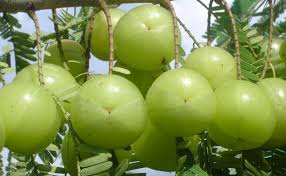 15. Soothes Menstrual Cramps
15. Soothes Menstrual Cramps
 It’s that time of the month when you try every remedy suggested by every other person – all because you don’t want to experience those cramps.
It’s that time of the month when you try every remedy suggested by every other person – all because you don’t want to experience those cramps.
Sometimes, menstrual cramps don’t let you perform even the simplest of tasks. Try amla juice, which is known to relieve menstrual cramps due to the presence of a plethora of vitamins and minerals.
16. Treats Infections
The antibacterial and astringent qualities of amla juice can treat even severe infections .
Amla juice is rich in vitamin C that helps increase the number of WBCs in the body, which means better immunity.
 White blood cells (WBCs), also called leukocytes or leucocytes, are the cells of the immune system that are involved in protecting the body against both infectious disease and foreign invaders. All white blood cells are produced and derived from multipotent cells in the bone marrow known as hematopoietic stem cells.
White blood cells (WBCs), also called leukocytes or leucocytes, are the cells of the immune system that are involved in protecting the body against both infectious disease and foreign invaders. All white blood cells are produced and derived from multipotent cells in the bone marrow known as hematopoietic stem cells.
17. Is A Powerful Antioxidant
Amla juice is rich in minerals and vitamins such as carotene, phosphorus, calcium, iron, and vitamin B complex, and hence, is a powerful antioxidant. It protects your body from oxidative stress by eliminating free radicals. It fortifies the liver, strengthens the lungs, nourishes your brain, improves muscle tone, regulates your urinary system and balances stomach acids. In fact, according to Ayurveda, regular consumption of amla juice promotes longevity.
Skin Benefits Of Amla Juice
Amla juice is an elixir for your skin — it prevents acne and spots, and makes your skin glow like never before. Here’s how your skin can benefit from amla juice.
18. Lightens Complexion
The antioxidants and vitamin C present in amla juice brighten your skin and lend it a natural glow. Have amla juice with honey or apply it as a face pack for a lighter complexion and blemish-free skin.
19. Anti-aging Benefits
Who doesn’t want to look younger? Here’s how you can take years off your face.
Amla juice helps maintain the youthful look of your skin as it contains a lot of antioxidants. Vitamin C, in particular, keeps your skin young-looking for a longer time. Regular intake of amla juice delays the effects of premature aging such as fine lines, wrinkles, dark spots, etc.
20. Treats Pigmentation
 Amla juice cleanses your skin and reduces pigmentation. Apply amla juice on your face with cotton and rinse off after a few minutes. Keep your eyes shut while doing so. Doing this regularly will lighten the marks and reduce pigmentation.
Amla juice cleanses your skin and reduces pigmentation. Apply amla juice on your face with cotton and rinse off after a few minutes. Keep your eyes shut while doing so. Doing this regularly will lighten the marks and reduce pigmentation.
21. Tones And Tightens Skin
The decrease in the collagen causes your skin tissue to lose its firmness and softness, resulting in sagging skin. As stated earlier, amla juice is rich in vitamin C, which boosts the production of collagen cells in the skin. This makes your skin soft, supple and youthful. It also tones and tightens your skin.
22. Treatment Of Acne And Pimple Scars
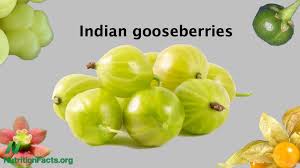 Amla juice is perfect for the treatment of acne and pimple scars.
Amla juice is perfect for the treatment of acne and pimple scars.
Applying a paste of amla for 10 to 15 minutes on the affected area will lighten the spots and reduce the occurrence of pimples. As a natural blood purifier, it fights the microorganisms in the skin, thus keeping skin infections, acne and pimples at bay. Hence, drinking amla juice can give you flawless skin.
23. Exfoliates And Cleanses Skin
It is a widely known fact that amla juice is an excellent cleanser whether ingested or applied topically.
Being a mild exfoliant, it helps remove the dead skin cells.
Note: If your skin is sensitive, dilute it with some water before applying.
24. Repairs Damaged Tissues
Amla juice has good healing properties due to the presence of vitamin C and other antioxidants, which can speed up the damaged tissue repair. It also combats the problem of dry and scaly skin .
Amla Juice Benefits For Hair
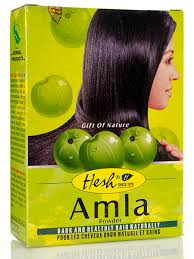 Amla has been considered a good hair tonic since ages. Women use a mix of amla and shikakai to get rid of many hair problems like premature graying, hair fall, and dandruff. But amla juice is even better. This list tells you why.
Amla has been considered a good hair tonic since ages. Women use a mix of amla and shikakai to get rid of many hair problems like premature graying, hair fall, and dandruff. But amla juice is even better. This list tells you why.
25. Strengthens Hair
 Does your heart skip a beat at the sight of huge chunks of your hair going down the drain everytime you wash your hair? Try amla juice to stop this undesired hair fall.
Does your heart skip a beat at the sight of huge chunks of your hair going down the drain everytime you wash your hair? Try amla juice to stop this undesired hair fall.
Amla juice strengthens your hair follicles, thus encouraging hair growth . You can apply a mixture of amla and lemon juice on your scalp and leave it on for 20 to 30 minutes. Rinse off with warm water. This will strengthen your hair from the roots and gives it a shine.
26. Prevents Premature Graying
I always wonder why my mother’s hair is still dark and shiny, while my hair is already turning gray. Most youngster today find themselves in a similar situation. Stress and improper food habits are some of the factors that lead to premature graying.
Thankfully, amla juice is very beneficial for those suffering from premature graying of hair due to the presence of antioxidants and vitamin C .
27. Treats Dandruff
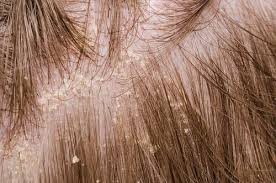 Did you know amla juice is an effective way to get rid of dandruff? The Vitamin C-rich juice prevents accumulation of dandruff on your scalp.
Did you know amla juice is an effective way to get rid of dandruff? The Vitamin C-rich juice prevents accumulation of dandruff on your scalp.
28. Improves Pigmentation
Most hair dyes contain amla powder. This is because this humble fruit helps fight pigmentation while making your hair darker and thicker. Amla juice is the best to treat hair discoloration and stop graying of hair.
29. Conditions Hair
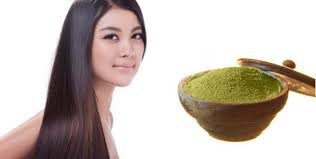
Amla juice acts as a great conditioner for dry and rough hair.
You can mix some amla juice with henna and apply it on your hair. This will counteract the drying nature of henna, making your hair look healthy. You can also use it as a hair wash to add extra shine and bounce.
30. Scalp Cleanser
If you are looking for an easy way to cleanse your scalp without making it messy and unmanageable, amla juice is the answer.
Add a few drops of amla juice to an egg, beat it and massage your hair with it. Amla juice will mask the smell of eggs and make your shiny and silky. It also cleans and nourishes your scalp (30).
31. Prevents Hair Problems
Besides strengthening your hair, amla juice also tackles several hair problems like hair loss, split ends and frizzy hair (31).
See, how many benefits drinking a glass of this juice can give you!
How To Prepare Amla Juice
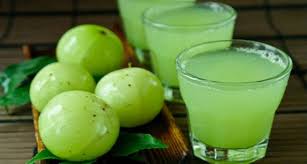 Today, amla juice is commercially available in medical stores, but there is nothing like homemade one right?
Today, amla juice is commercially available in medical stores, but there is nothing like homemade one right?
Here is a simple process to make amla juice at home.
What You Need
1 cup Amla (Indian Gooseberry), cut into pieces.
1 cup sugar.
A pinch of sea salt or Himalayan rock salt.
A pinch of cardamom powder (optional) for a glass of amla juice.
How To Make
1.Wash and dry the amlas and place them in a bowl.
2. Adding 1 ½ cups of water to the pressure cooker and place the bowl in it. Cover the pressure cooker with its lid and light the stove.
3. Switch off the stove after one whistle. Remove the bowl from the stove when there is no pressure in the cooker.
4. Now, gently touch the gooseberry to see if it has cooled down. Press the amla with your fingers and remove the seeds.
5. Grind sugar into a fine powder.
6. Grind the amla pieces. If you find it difficult to grind them, add some sugar powder and then grind them.
7. To prepare the amla juice concentrate, mix the amla paste with sugar powder and salt. Place this concentrate in a freezer safe box and store it in the freezer.
8. Add 2 to 3 spoons of this concentrate to a glass of water whenever you require amla juice. You can add some cardamom powder and stir well.
Note:
1. Though it is usually sweetened by adding sugar, you can add a little jaggery or brown sugar, salt and pepper to the drink to get a different taste. You can also flavor it with a little cardamom powder.
2. Since amlas are slightly bitter in taste, you can initially cook them in water. This will make them soft and less bitter.
3. This juice concentrate can be stored in the freezer for 8 months or more. However, it changes color in course of time.
Preservation Of Amla Juice
To preserve amla juice, ensure that the quantity of the juice is equal to the capacity of the jar. For instance, 500 g of amla juice should be stored in a 500 g capacity glass or container. Add 2 tablespoons of sodium lactate and mix well. This juice can be preserved in the refrigerator for 8-10 months. Sodium lactate is easily available at a chemist or any store that sells food chemicals.
A Word Of Caution
Even though amla juice is natural if it’s made at home, consuming it in certain conditions can actually backfire. Take a look:
~Never have it on an empty stomach as it can trigger hyperacidity which can be quite painful.
~Having amla juice more than twice a day can harden the stools, causing constipation.
~If you are diabetic, consult your doctor before you drink amla juice. It is known to lower the blood sugar levels, which can actually interfere with your medication.
~You should always check for allergies before having amla juice.
~Having more than the recommended quantity can leave you dehydrated due to excessive loss of water from the body.
~Having it during pregnancy might make you uneasy. So, take your doctor’s advice before consuming amla juice.
~It is not advisable for small kids to consume amla juice more than necessary, as it may cause diarrhea.
Takeaway: Amla juice can help you get rid of many health disorders like gastritis, asthma, piles, obesity, insomnia, and bad breath. It also helps provide smooth, acne-free skin. Amla juice can be called elixir for hair as it tackles hair fall, dandruff, premature graying, pigmentation, and frizzy unmanageable hair.
Now you know amla juice offers countless benefits for your skin, hair, and health by enriching your body with vital nutrients. So, what are you waiting for? TRY AMLA TODAY!
It’s time you gave your body its share of nourishment!
Do you know any other benefit of amla juice? Have you had an experience with this juice? Do let us know by commenting in the box below.
Stay healthy!
My Daily Anticancer Routine: Now I'm going to walk you through my daily anticancer routine.
1. First thing in the morning I drink 16 to 24 ounces of filtered water. I had a distiller back then, now I am using Berkey water filter. So first thing I do, is drink 16 to 24 ounces of water. Why? Because it hydrates you and it gets your bowels moving. I like to add things like amla and moringa, green powder, lemon juice, and I often steep a bag of tea in the water overnight like Jason Winters tea, green tea, or hibiscus tea.
2. Next would be 10 to 20 minutes of morning exercise. Walk, jog, ride your bicycle, jump on a rebounder/trampoline , do some breathing exercise, some push-ups, do a workout DVD, whatever. Just get your blood pumping and your lymphatic system moving. And get a little sweat going. Perspire daily.
3. After that, I would take a shower , and then spend 30 minutes or more of devotional time reading the Bible, journaling, affirmations, and prayer.
4. The next step was to make my juice for the day. I made 64 fluid-ounces of juice. That's 8 x eight-ounce servings to drink throughout the day stored in airtight mason jars. Most days I would skip breakfast and drink juice through the morning.
5. Mid-morning I might have a piece of tart fruit like a green apple or a grapefruit. But any fruit is wonderful. Don't be afraid of fruit because it's sweet. Fruit is awesome. So, any fruit you enjoy eat it ; pineapple, cantaloupe, watermelon, oranges, kiwi, any fruit you want to eat. You didn't get cancer from eating too much fruit. If you need more calories go with organic oatmeal for breakfast.
6. Lunch is the giant salad. And the fruit smoothie is also a great afternoon snack, but it could be breakfast or lunch. But if you have cancer, I think it's important to make sure you get two giant salads in your body every day. If you're hungry between meals that means you need to eat more. Eat bigger meals. But you can also snack on almonds or walnuts or snack on fruits. Eat an apple, eat a banana, have a few oranges, eat some dates, or figs. Like I said, don't be afraid of this sugar in fruit. Fruit is good.
7. 10 to 15 minutes before lunch and dinner, squeeze in some light exercise, like bouncing on the rebounding/trampoline, a quick walk, whole body stretching exercise, jog , anything. That's an easy way to remember to do it, just get it into your routine.
Obviously, you don't want to get sweaty, 3 times a day, necessarily because then, you are going to feel the need to bathe 3 times a day. So rebounding, or brisk walking is great, because you are moving your body and moving your lymph without breaking a sweat and getting body odour, BO.
8. Taking a walk after dinner is a great thing to do with the family. We love to do that when the weather is nice. So again, movement before or after dinner or both, and dinner would be another giant cancer-fighting salad.
MY PROTOCOL
The first 90 days of my protocol was 100% raw fruits and vegetables ; juicing, giant salads , and full smoothies, all raw. And I think that's a great place for the majority of cancer patients to start.
Now this diet is meant to ne tweaked based on your metabolic needs. if you're overweight, the raw diet will be perfect for you because you can eat as much as you want and you're going to lose weight. but if you are thin with a high metabolism and you're struggling to maintain your body weight, then you need to eat more cooked food.
After 90 days on raw food, I added some cooked vegetables back to my diet. I lost a lot of body weight with cancer, I lost more weight when I went raw and after doing water fasts and juice fasts. And at my lowest I was 130 pounds and I 'm 6 feet 2 inches in height, so I was definitely underweight. I looked like 'Jack from The Nightmare Before Christmas,' and I just needed more calories that I was getting from a 100% raw diet.
So 100% raw diet is not necessary, but 100% plant-based is. Like I said, if you're overweight, 100 % raw diet would be great for you because you can stuff yourself with fruits and vegetables and you will still lose weight. Just keep the oils to a minimum, because oils are the most concentrated source of calories you can eat.
If you are overweight, it's because you have a very efficient metabolism. Your body is really good at maintaining muscle mass and storing food as energy. You need less food intake than the average person which means you actually have a survival advantage. But because we've been conditioned to eat 3 times a day (breakfast, lunch, dinner) by the food industry, you've been putting more calories into your body than it needs and it's stored those extra calories as fat.
The raw diet is naturally lower in calories than the Western diet so your body will start burning any excess fat and you'll eventually get back down to your ideal body weight.
But I had the reverse problem and I needed more calories. It's a simple problem with a simple solution. So I added some cooked food back to my diet. I started by adding some cooked vegetables with dinner like sweet potato, brown rice, quino, or lentils. Since then I've discovered black rice and red rice, which have higher antioxidant levels than brown rice, and they're delicious.

BLACK RICE

RED RICE

BROWN RICE
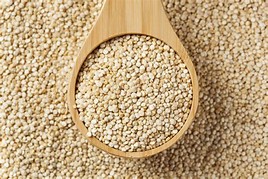
QUINOA
 All types of beans and peas are wonderful : Black beans, garbanzo beans, black-eyed peas, green beans, split peas, chick peas, lentils. Any cooked vegetables you like is allowed. Just don't cook them in oil or grease and no fried food. Boiling or steaming is best, baking is okay.
Now, let's talk about meat. Along with some cooked veggies, my nutritionist also recommended adding a few servings of clean meat to my diet. I start with a serving of wild caught Alaskan Salmon or organic lamb meat a few times a week. At that point I'd been on a raw vegan diet for 90 days, and I just assumed I would probably never eat meat again and I was fine with it. I didn't change my diet because of an animal reason, I changed it for a health reason. I was trying to save my life, so I was willing to eat anything if I thought it could help me. As long as they could help heal my body of cancer, so I didn't have any kind of resistance to eating meat again except that I wasn't sure if it was healthy or not. I was willing to do whatever it took to get well, and I was definitely underweight and I was ready to put some of animal protein back to my diet,
Since then, I've learned that the healthiest populations around the world do eat a little bit of animal meat, but not much. The healthiest, longest living people in Africa, Asia, South America, the Mediterranean, and the Middle East and even in the U.S. eat diets that are about 95% plant-based on average and only about 5% animal meat, What we don't know is whether or not this small amount of animal meat is actually health-promoting or if it's just not enough to hurt you. In hindsight it may not have been necessary but I added a couple of serving a week of either wild-caught salmon or lamb meat along with cooked vegetables like sweet potatoes, brown rice, quinoa, and lentils with dinner.
*[Lamb, hogget, and mutton are the meat of domestic sheep at different ages. A sheep in its first year is called a lamb, and its meat is also called lamb. The meat of a juvenile sheep older than one year is hogget; outside North America this is also a term for the living animal. The meat of an adult sheep is mutton, a term only used for the meat, not the living animals.]
And those extra calories helped me get back to my normal weight. Again, if you're trying to lose weight, juice throughout the morning, eat two giants salads for lunch and dinner and fruit, or fruit smoothie as a snack.
If you are trying to gain weight, definitely eat oatmeal for breakfast, the giant salads for lunch, fruit smoothie as an afternoon snack, and then another giant salad with cooked veggie for dinner ; like rice, beans, peas, lentils, and sweet potatoes. This is a simple strategy. We don't need to reinvent the wheel here. We just want to get the most potent anti-cancer foods into your body every single day. And consistency matters.
If you do this for a few weeks and then go back to your old routine it's not going to make any difference. But when you're popunding in 15 to 20 servings of fruits and vegetables every day there is s snowball effect that happens in your body. You will gain momentum and accelerate the regeneration and restoration of your body. This of course is assuming you're not in such a late stage that your body cannot recover.
Occasionally that is the case of some cancer patients if they've been through all the treatments possible and the doctor says there's nothing more we can do.
Sometimes it is too late. but look, you never know unless you try. So if that sounds like you, it's still worth going for it. Pull out all the stops, because I've seen miracles happen when people make a radical diet and lifestyle change like this.
I've met many stage four cancer patients who have healed after they were sent home to die. just keep it simple and follow this formula and enjoy your life, and the process.
Now I want to talk a little bit more about animal products. But first, I want to make sure we're all on the same page. When I use the word meat, I'm not just talking about beef or red meat. I'm talking about all parts of all animals : the muscles, organs, and tissues of all animals. The term dairy is anything that comes from the mammary gland of any animal ; milk, cheese, butter, yogurt. yes, that includes ice cream, gelato, and frozen yogurt. The term animal products include all of the above, anything that came from an animal: meat, dairy, eggs, bone broth, et cetera.
As I discussed in the anticancer diet part one, knowing what I know now about how hormones IGF-I, methionine, and heme iron in animal products can fuel cancer growth, I think what I did was a bit risky. And I think the safest approach for cancer patients is to stay off all animal products for the first phase of your healing journey, at least 90 days, maybe even a few years. But for those of you who've been well for a few years, or if you're doing this for prevention and you're eating some animal protein, hopefully no more than a few times a week, here's something you need to know about the safest healthiest types of animal meat, and the best ways to prepare it. In 2004, right around the time my nutritionist recommended I add a little animal protein back to my diet, I came across some one who made the case that we should follow the same dietary principles as the Israelites in the Old Testament. Now God gave the Israelites very specific dietary rules. They were allowed to eat all seed bearing plant food, but they were given specific rules as to which animals they were allowed to eat. Some animals were deemed unclean and were forbidden to be eaten by the Israelites. The first time I read those dietary law I was much younger and I thought they were completely arbitrary and I was told that they didn't apply today. But what I believe is true now is that these guidelines are still valuables and if we follow them, we will have better health. the reason that God gave these dietary guidelines to the Israelites, to His chosen people , were not arbitrary at all , it was because He wanted them to be strong and healthy and free from disease.
All types of beans and peas are wonderful : Black beans, garbanzo beans, black-eyed peas, green beans, split peas, chick peas, lentils. Any cooked vegetables you like is allowed. Just don't cook them in oil or grease and no fried food. Boiling or steaming is best, baking is okay.
Now, let's talk about meat. Along with some cooked veggies, my nutritionist also recommended adding a few servings of clean meat to my diet. I start with a serving of wild caught Alaskan Salmon or organic lamb meat a few times a week. At that point I'd been on a raw vegan diet for 90 days, and I just assumed I would probably never eat meat again and I was fine with it. I didn't change my diet because of an animal reason, I changed it for a health reason. I was trying to save my life, so I was willing to eat anything if I thought it could help me. As long as they could help heal my body of cancer, so I didn't have any kind of resistance to eating meat again except that I wasn't sure if it was healthy or not. I was willing to do whatever it took to get well, and I was definitely underweight and I was ready to put some of animal protein back to my diet,
Since then, I've learned that the healthiest populations around the world do eat a little bit of animal meat, but not much. The healthiest, longest living people in Africa, Asia, South America, the Mediterranean, and the Middle East and even in the U.S. eat diets that are about 95% plant-based on average and only about 5% animal meat, What we don't know is whether or not this small amount of animal meat is actually health-promoting or if it's just not enough to hurt you. In hindsight it may not have been necessary but I added a couple of serving a week of either wild-caught salmon or lamb meat along with cooked vegetables like sweet potatoes, brown rice, quinoa, and lentils with dinner.
*[Lamb, hogget, and mutton are the meat of domestic sheep at different ages. A sheep in its first year is called a lamb, and its meat is also called lamb. The meat of a juvenile sheep older than one year is hogget; outside North America this is also a term for the living animal. The meat of an adult sheep is mutton, a term only used for the meat, not the living animals.]
And those extra calories helped me get back to my normal weight. Again, if you're trying to lose weight, juice throughout the morning, eat two giants salads for lunch and dinner and fruit, or fruit smoothie as a snack.
If you are trying to gain weight, definitely eat oatmeal for breakfast, the giant salads for lunch, fruit smoothie as an afternoon snack, and then another giant salad with cooked veggie for dinner ; like rice, beans, peas, lentils, and sweet potatoes. This is a simple strategy. We don't need to reinvent the wheel here. We just want to get the most potent anti-cancer foods into your body every single day. And consistency matters.
If you do this for a few weeks and then go back to your old routine it's not going to make any difference. But when you're popunding in 15 to 20 servings of fruits and vegetables every day there is s snowball effect that happens in your body. You will gain momentum and accelerate the regeneration and restoration of your body. This of course is assuming you're not in such a late stage that your body cannot recover.
Occasionally that is the case of some cancer patients if they've been through all the treatments possible and the doctor says there's nothing more we can do.
Sometimes it is too late. but look, you never know unless you try. So if that sounds like you, it's still worth going for it. Pull out all the stops, because I've seen miracles happen when people make a radical diet and lifestyle change like this.
I've met many stage four cancer patients who have healed after they were sent home to die. just keep it simple and follow this formula and enjoy your life, and the process.
Now I want to talk a little bit more about animal products. But first, I want to make sure we're all on the same page. When I use the word meat, I'm not just talking about beef or red meat. I'm talking about all parts of all animals : the muscles, organs, and tissues of all animals. The term dairy is anything that comes from the mammary gland of any animal ; milk, cheese, butter, yogurt. yes, that includes ice cream, gelato, and frozen yogurt. The term animal products include all of the above, anything that came from an animal: meat, dairy, eggs, bone broth, et cetera.
As I discussed in the anticancer diet part one, knowing what I know now about how hormones IGF-I, methionine, and heme iron in animal products can fuel cancer growth, I think what I did was a bit risky. And I think the safest approach for cancer patients is to stay off all animal products for the first phase of your healing journey, at least 90 days, maybe even a few years. But for those of you who've been well for a few years, or if you're doing this for prevention and you're eating some animal protein, hopefully no more than a few times a week, here's something you need to know about the safest healthiest types of animal meat, and the best ways to prepare it. In 2004, right around the time my nutritionist recommended I add a little animal protein back to my diet, I came across some one who made the case that we should follow the same dietary principles as the Israelites in the Old Testament. Now God gave the Israelites very specific dietary rules. They were allowed to eat all seed bearing plant food, but they were given specific rules as to which animals they were allowed to eat. Some animals were deemed unclean and were forbidden to be eaten by the Israelites. The first time I read those dietary law I was much younger and I thought they were completely arbitrary and I was told that they didn't apply today. But what I believe is true now is that these guidelines are still valuables and if we follow them, we will have better health. the reason that God gave these dietary guidelines to the Israelites, to His chosen people , were not arbitrary at all , it was because He wanted them to be strong and healthy and free from disease.

